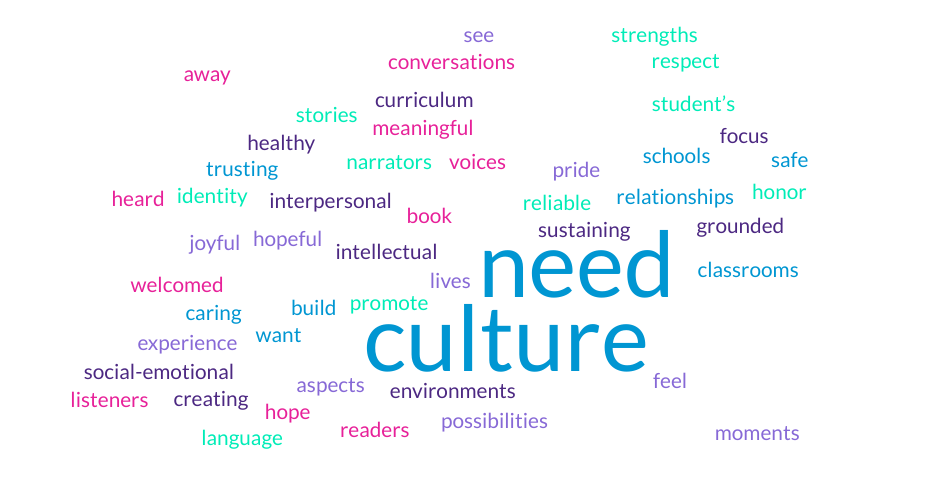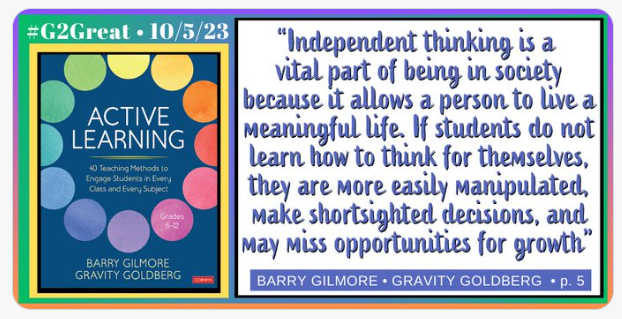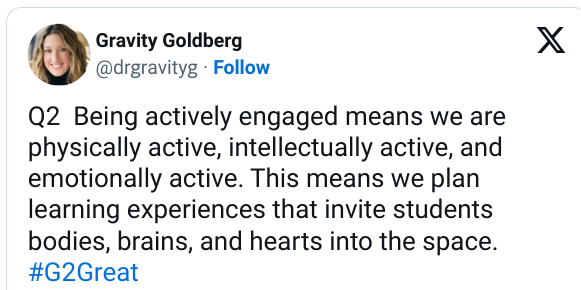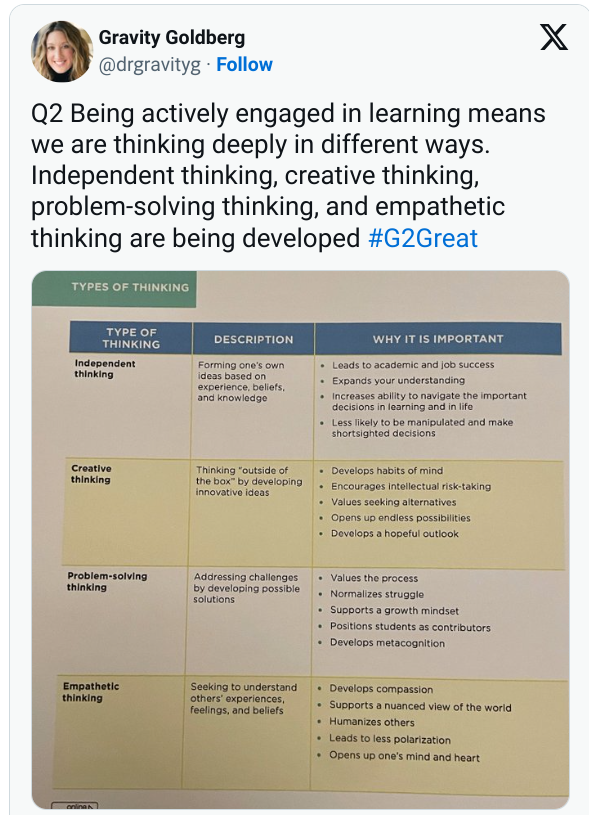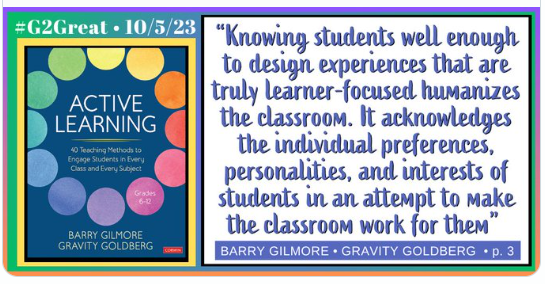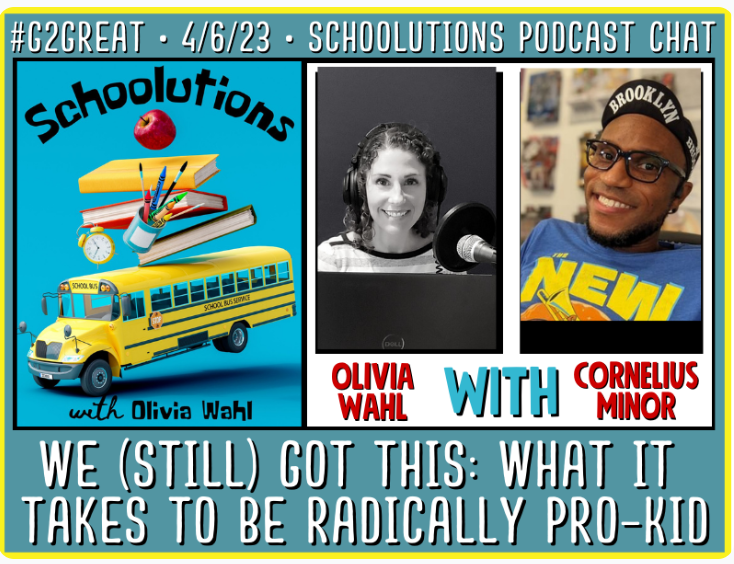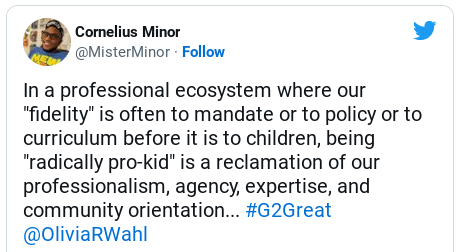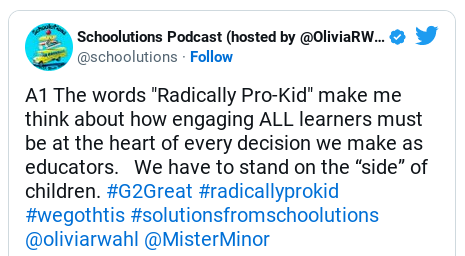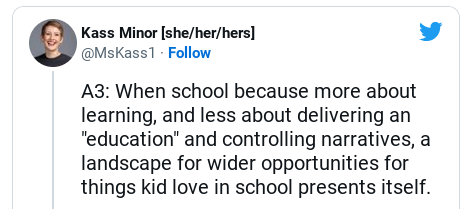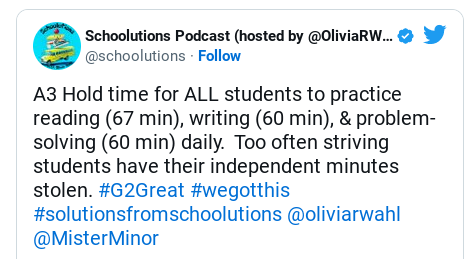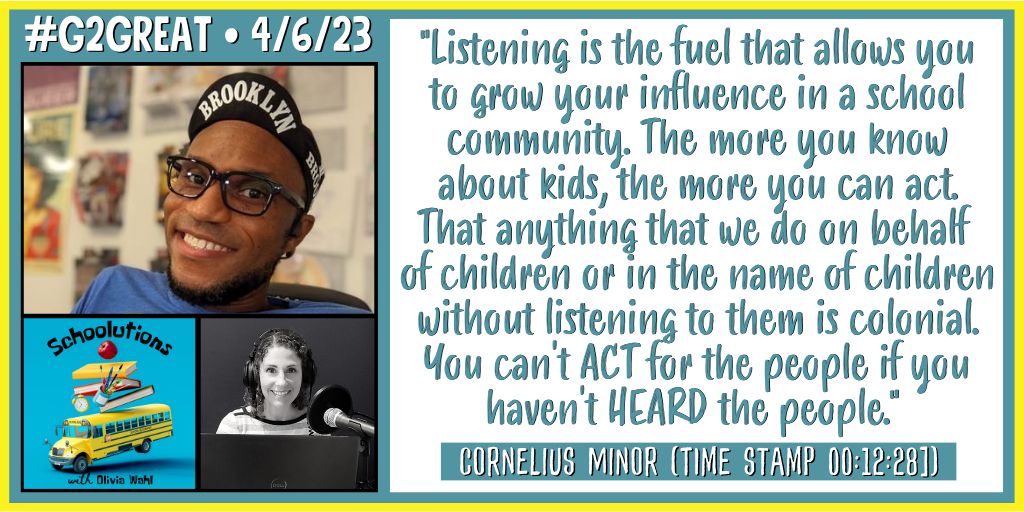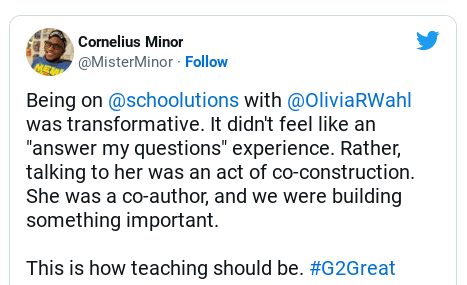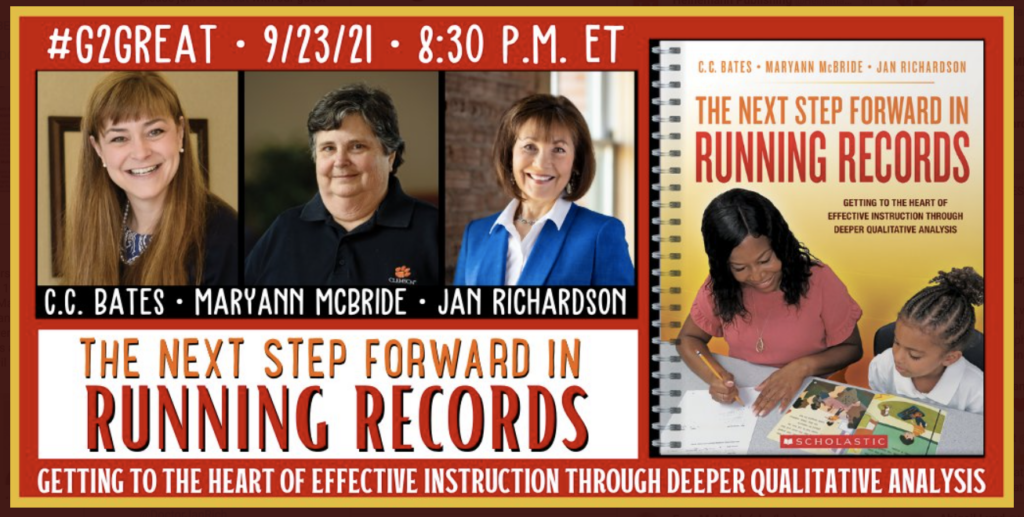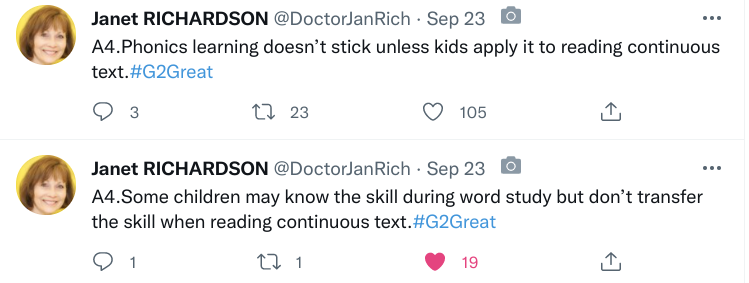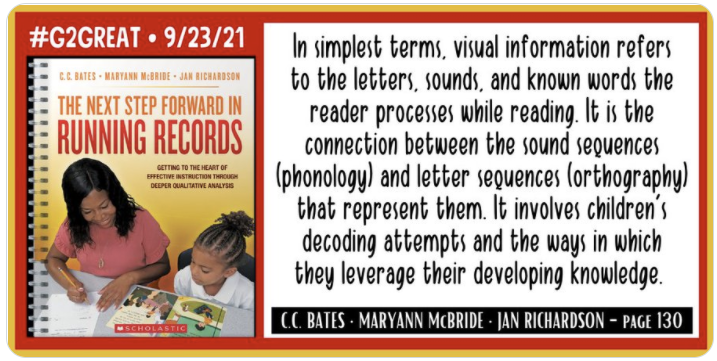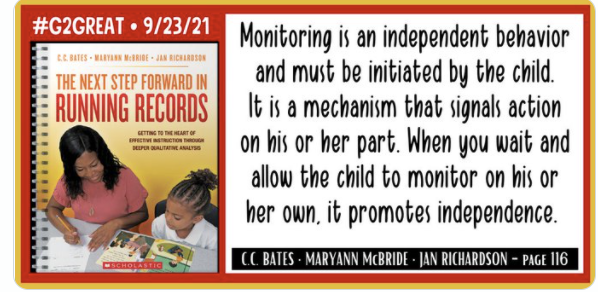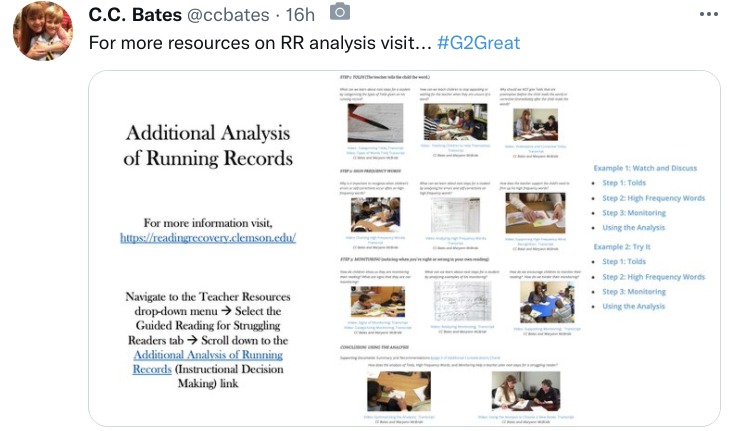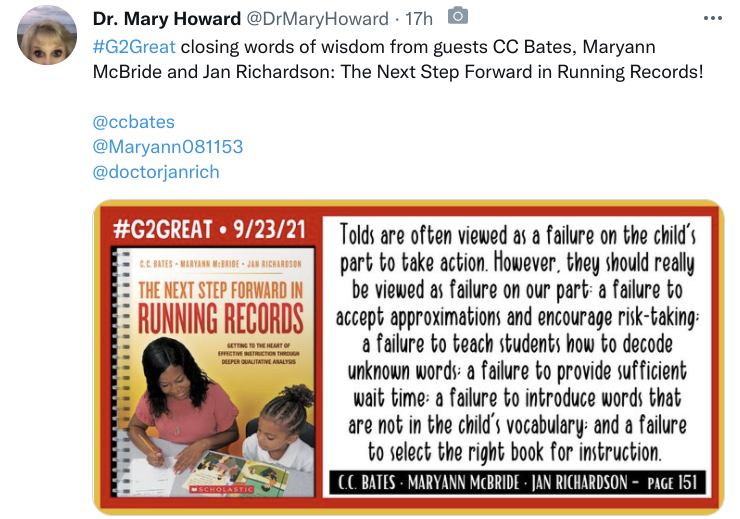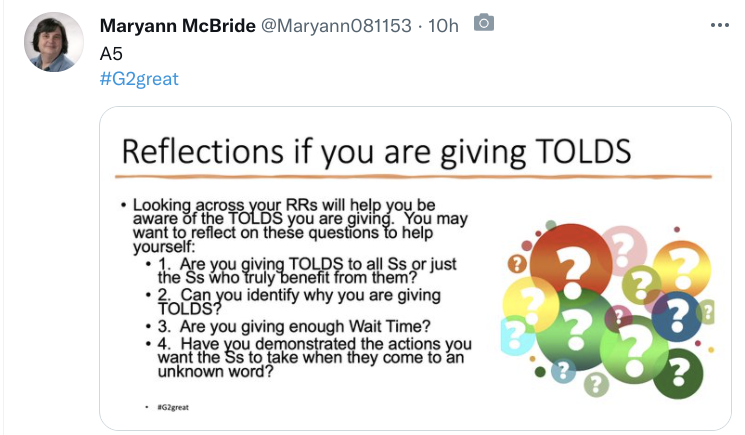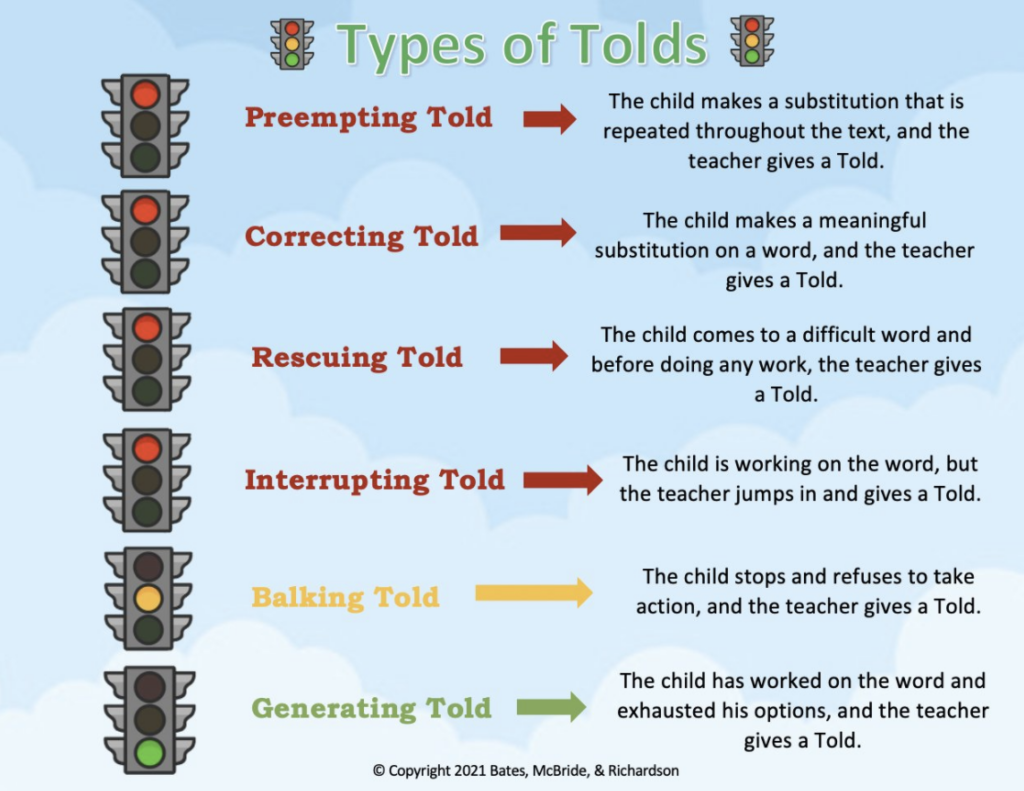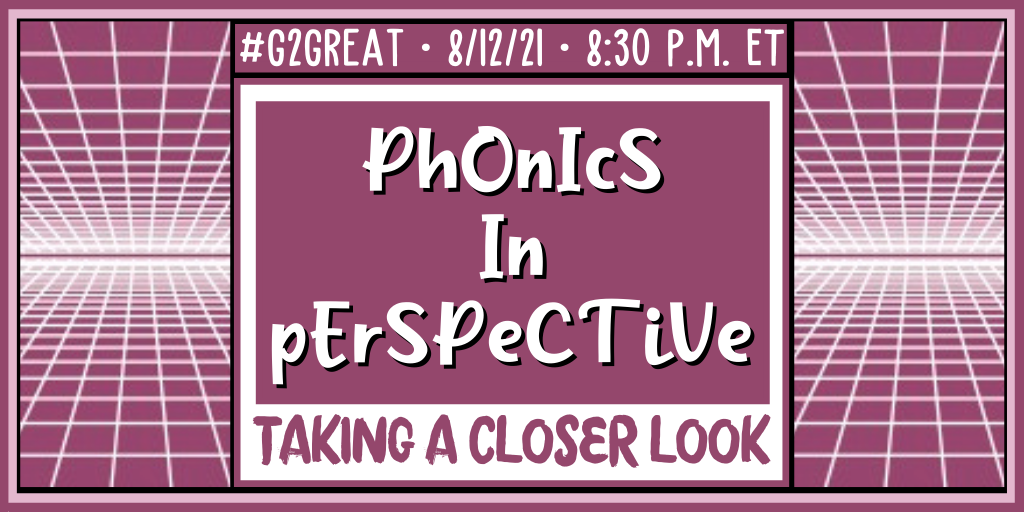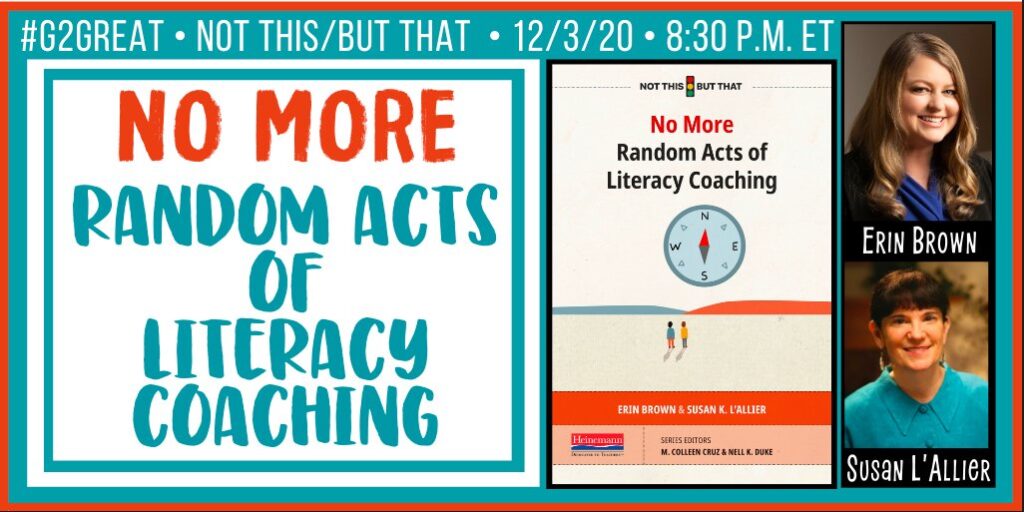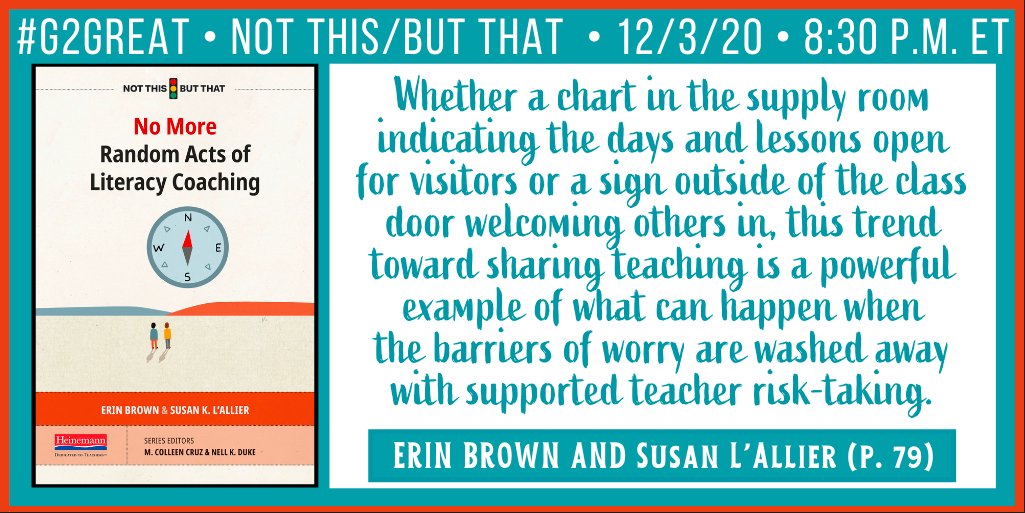
Archive of Tweets available at
By Fran McVeigh
Early in my education career, during my undergraduate work, an instructor said, “You have to love all the kids. You don’t have to like them every day all the time. But you do have to love them.” That quote has been a part of my professional and personal life and is also why I think I have made so many personal connections to many authors and educators. One characteristic that we have always had in common is a love for all students. A love with our whole hearts.
As I began reading The Heart-Centered Teacher, I was fascinated by the brilliant way that Regie Routman wove her personal and professional experiences together. And then that fascination opened my mind to new possibilities as I continued through the book and all the resources Regie has made available. Regie embodies all that Mary Howard wrote about in her book Good to Great Teaching: Focusing on the Literacy Work that Matters.
Let’s begin the heart of this post with Question #1 for our author and her response.
1. What motivated you to write this book? What impact did you hope that it would have in the professional world?
I was motivated by two factors. One: I was hoping that a book that combined my personal and professional lives might be healing for me and for so many who are dealing with loss and adversity. We teach the whole child; I believe we need to bring the whole teacher into our work with children, and that includes letting ourselves be known. Two: I had written about a dozen books for educators dealing with the “what” “why” and “how” of literacy teaching and learning. Now, with the perspective that comes from teaching for five decades and from living a full life, I wanted to pull it all together in a way that might be meaningful for all of us. That is, to discuss how we can lead “The Good Life,” not just in school but in all aspects of our lives. My hope/is was to show that interconnecting teaching, learning, and living is necessary to be and become our truest selves professionally and personally.
Also, the “how” of teaching reading, writing, speaking, and listening–while a major emphasis in this book—is not the only high priority I explore. With that in mind, for new and inexperienced teachers and for all of us seeking to do better, I added a “Companion Website: Resources” that is free to all; you don’t have to buy the book to access it. You can find that website at https://sites.google.com/view/theheartcenteredteacher/home or through my website at regieroutman.org by clicking on “Online Resources.” You will find supplemental teaching resources by chapter that include a comprehensive study guide, videos, podcasts, articles, instructional approaches, downloadables, and more—including favorite recipes. Over time, I will be adding additional Resources.
As a reader, I always devour the endpapers of every book. Every word is purposefully chosen by the author and this “extra knowledge” helps deepen my understanding of the content as well as the purpose behind the text.
So Question # 2 and Regie’s response follow perfectly in this instance.
2. What are your BIG takeaways from your book that you hope teachers will embrace in their practices?
Most of all, “it’s all about relationships.” If we want to build a safe, trusting, caring culture in our schools and classrooms, then we need to focus on creating and sustaining healthy social-emotional, interpersonal, and intellectual environments. That is, we need to have our curriculum grounded in stories with reliable narrators; respect and honor each student’s culture, language, identity, and strengths; and promote meaningful conversations where all voices are welcomed and heard. I hope readers and listeners of the book come away more hopeful, see more possibilities in all aspects of their lives, experience joyful moments, and feel the pride in being a teacher—in spite of all the ongoing challenges we face.
There are so many pieces in this quote. The beauty is in Regie’s words of hope, joy, and possibilities for teacher practices. When I couldn’t decide how to focus my thoughts, I created a word cloud to SEE what was embedded in this paragraph.
Restoring Hope, Joy, and Possibility
This subtitle is important. I’ve collected quotes, tweets, and thoughts from the book or from the chat to share so many words of wisdom. (Do note that some overlap into more than one category!) Which ones are your favorites?
HOPE
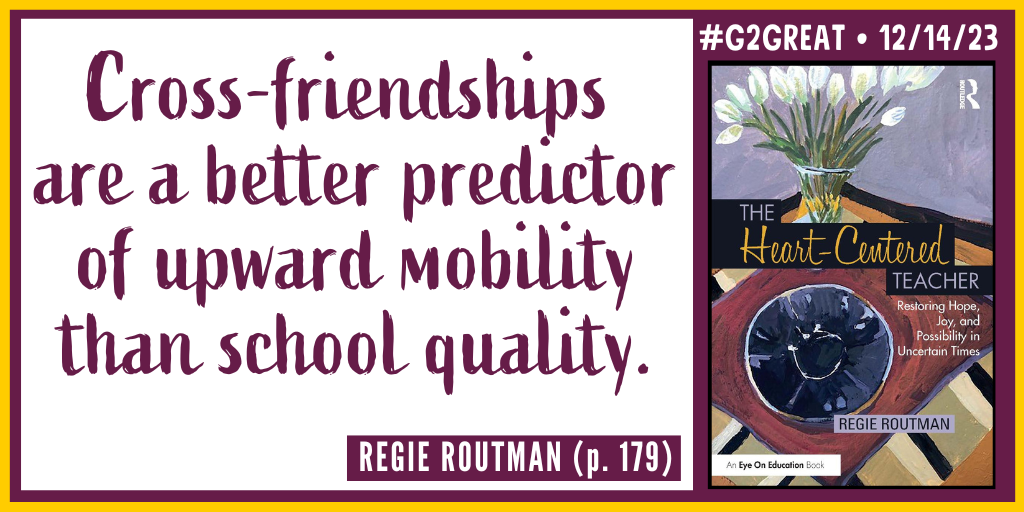




JOY
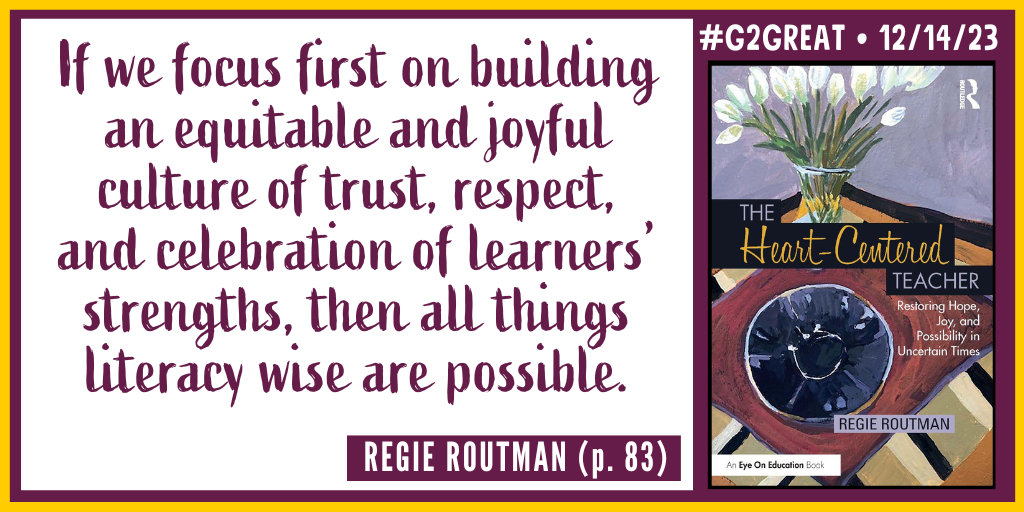


POSSIBILITY
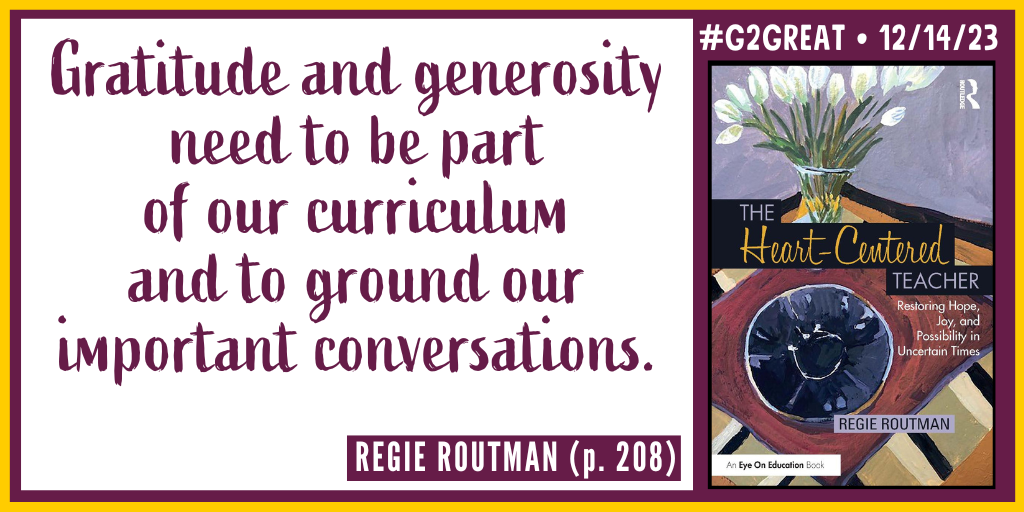
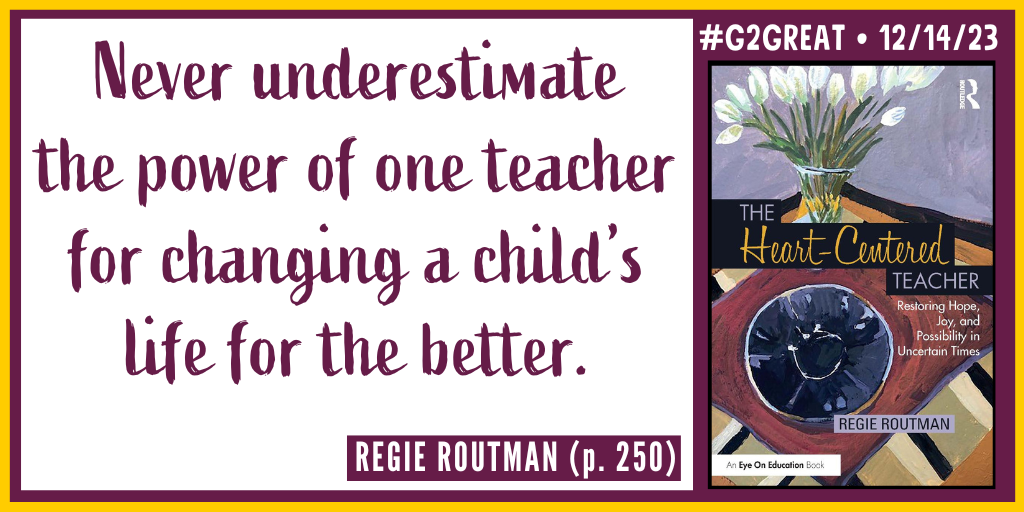
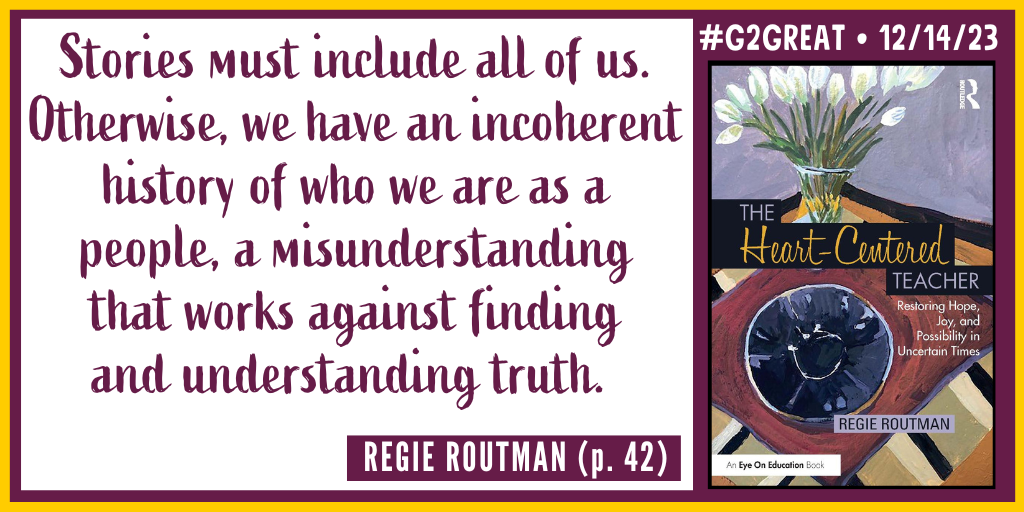



And Question #3 with Regie’s response provides a super conclusion for this post.
3. What is a message from the heart you would like for every teacher to keep in mind?
Even if you are falling short, as we all occasionally do, if you have changed one life for the better you have been a significant influencer. “Never underestimate the power of one teacher to change a child’s life for the better.” Often we never know whose lives we’ve impacted, but if we have honored and celebrated children’s strengths, culture, and intelligence, we have touched their lives in ways that will resonate and significantly influence them—perhaps for a lifetime.” (P. 250)
You. You are enough. You have touched student lives. “If you have changed one life for the better, you have been a significant influencer.”
Thank you and remember to celebrate the lives you have touched as you celebrate this holiday season.
Additional Resources:
Regie Website: https://www.regieroutman.org/
Routledge Book Order
Chat Wakelet that includes the questions, responses and quotes above https://wakelet.com/wake/TYW19GQypW_vCqOHFLoAB
Regie Routman #G2Great chat for Literacy Essentials https://literacylenses.com/2022/10/
